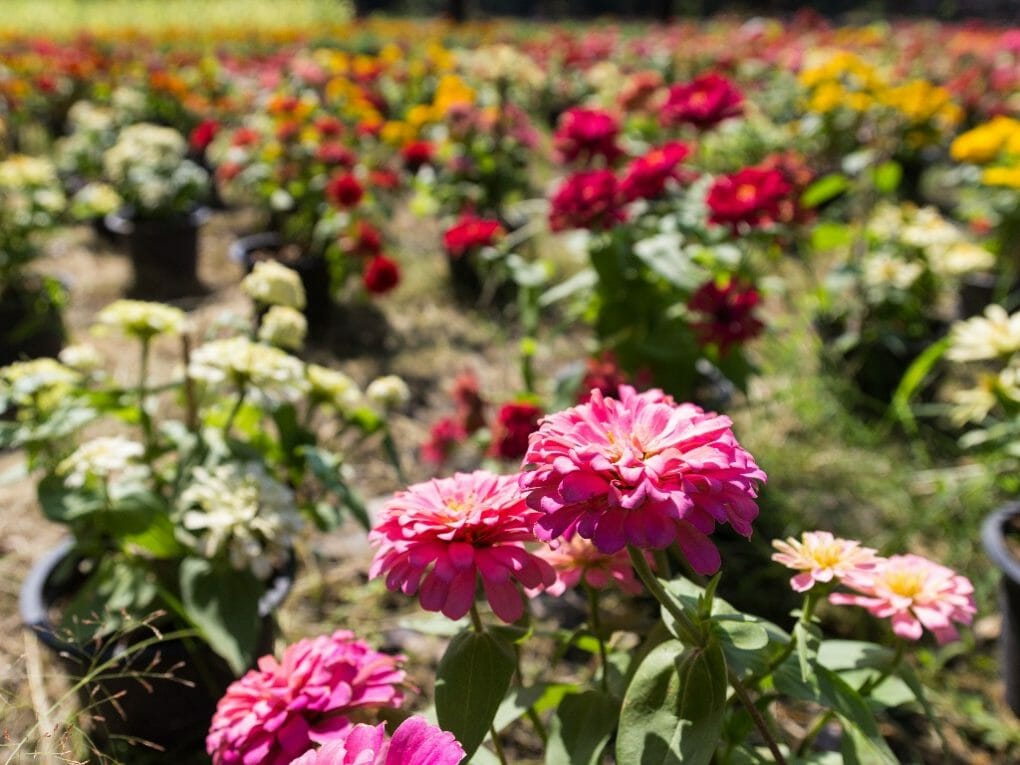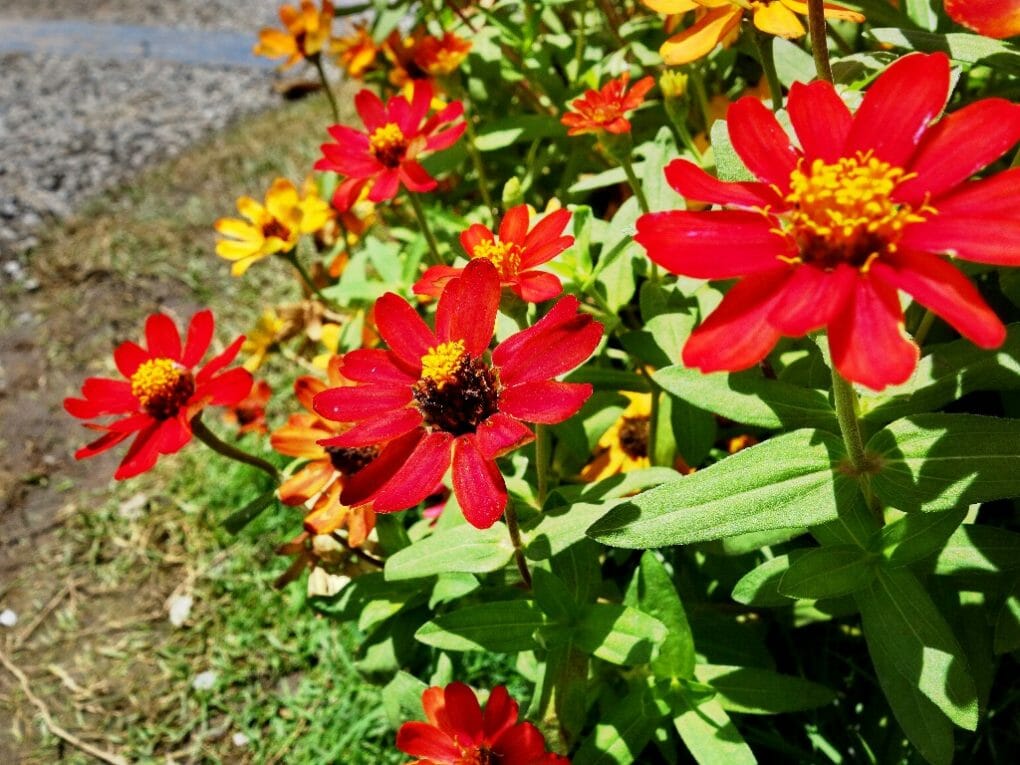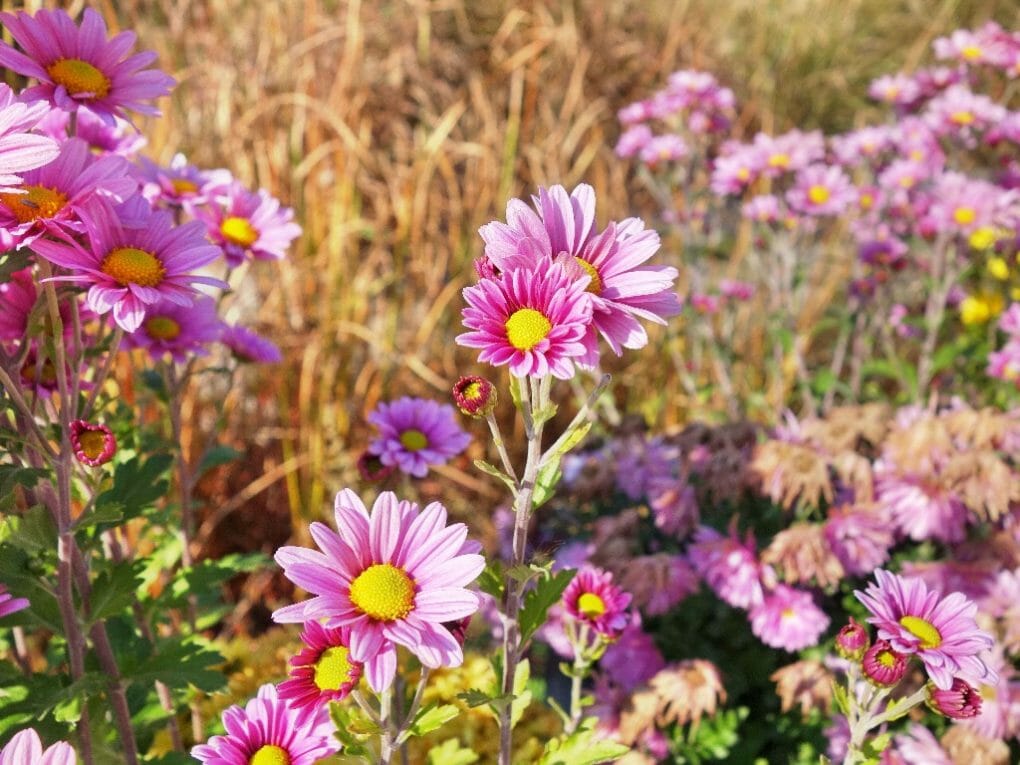Zinnia in Vegetable Garden | The Positive Effects of Mixing Zinnias in Vegetables Garden

Zinnias are an excellent choice for both aesthetics and practicality in the garden. They are versatile garden plants that can be used in many different ways. They make an excellent ground cover, and they also make great cut flowers. When planted in a vegetable garden, zinnias provide attractive blooms and extra food for pollinating insects. Additionally, their hardy nature means they can handle some levels of frost damage.
They also add color to the garden, making them a great complement to your vegetable plantings. You can expect more bees, butterflies, and hummingbirds to stop by your vegetable flowers if you plant zinnias.
These flowers are a beautiful addition to your favorite outdoor areas, and you can take pleasure in their cheery appearance while they do so.
Table of Contents
The Positive Effects of Mixing Zinnias in Vegetables Garden
Pollinator-Friendly
Plants require pollinators’ assistance to produce fruit. Excellent pollinators include animals like bees, wasps, hummingbirds, and butterflies.
They assist in transporting pollen from male flowers to female flowers. After being pollinated, the female flowers can start to develop the plant’s fruit or vegetable. There is no doubt that pollinators are essential for the vegetable garden.
Bright colors and textures tend to draw the attention of most pollinators. Even though tomato and zucchini blooms are attractive, they simply cannot match the vivid pinks, reds, and purples of zinnias. Zinnias produce numerous vibrantly colored blooms, which aids in drawing a large number of pollinators.
Pollinators are welcomed with a lot of pollen and nectar as soon as they arrive. Zinnias can also provide pollinators with food throughout the growing season because they bloom from early summer until the first frost.
Additionally, the zinnia flower’s open petal shape provides these pollinators with a great landing area. Other flower species’ blooms sometimes lack the shape required for this. Zinnia leaves, which are also big and a great option for pollinators taking a break, are another popular flower.
Hide the Seeds on Veggie Plants
If your lettuce, cucumbers, or other vegetable plants have gone to seed, a border of colorful zinnias can hide the brown, crispy plants making seeds for next year’s crop.
Gorgeous Splash of Color

The bright, colorful flowers of zinnias are one of the best things about growing them in your vegetable garden. This may not be a big surprise.
The endless flowers come in red, orange, yellow, green, purple, and pink, among other colors. They can have single, double, or half-double flowers, giving your garden a lot of variety and depth.
Depending on the type, zinnias can also be different heights. Dwarf zinnias only get up to 6 inches tall, so they are great for pots and containers. Some giant types can grow more than 4 feet tall, making them great for gardens and paths.
Mix things up by planting a few different kinds at different heights, depending on how your garden is set up and where it is. Just remember that taller plants will need some shelter from the wind.
With all the different colors, heights, and blooms, there is a zinnia out there that will fit your garden.
Tall Without Shading
Zinnias are a great way to add height to your plantings without obstructing the light that reaches your vegetables and other plants. They let light pass through their petals without blocking them. Zinnias are a versatile option for the garden due to their ability to reach great heights without casting shadows on other plants.
Effortless Growth
Some plants may be thought of as being simple to grow and maintain. Zinnias, however, are the real deal when it comes to caring. First of all, even in the middle of the summer, zinnias are incredibly simple to grow from seed directly in the ground!
Zinnias are more likely to survive if planted directly in your garden. Although you can start them indoors and transplant them outside, direct sowing is preferable.
Zinnia seeds can be planted outside if you wait until the daytime temperature is 60° Fahrenheit (16° Celsius) or higher. Select a location that receives direct sunlight, and ensure the soil is fertile and well-draining.
It only takes 4-7 days for germination to occur. To ensure adequate airflow between plants, thin seeds once they are a few inches tall. Water young seedlings thoroughly, and that’s about it.
Inviting Other Useful Insects
Having pollinators and other beneficial insects around vegetable plants is a win-win for the plants and the gardeners who tend them.
The vivid hues of zinnia flowers, for instance, entice ladybugs. Aphids and mites are two pests that can be greatly reduced with the help of ladybugs.
Zinnia flowers are perfect for luring in predatory wasps with all that sweet nectar. Wasps aren’t exactly high on most people’s list of favorite insects, but they do a great job of keeping pests like aphids, stink bugs, June bugs, cabbage worms, and tomato hornworms at bay.
Agricultural Victim
Unfortunately, zinnias are also a favorite of many pest insects. This may not sound like a good thing, but it can work to your benefit.
The Japanese beetle is a notorious invader of gardens and one of the worst pests to face. Crops of vegetables and fruits can be wiped out in days if these insects arrive in their hundreds.
Zinnias are attractive and useful both as ornamental plants and as a sacrifice crop. When pests like the Japanese beetle threaten to destroy an entire harvest of vegetables, a “sacrificial crop” can be planted as bait. Planting zinnias near green beans or other vegetable crops that pests enjoy can help deter them. Pests are more likely to attack the zinnias than your food plants.
Vegetables That Will Grow Well With Zinnias
Asparagus
Zinnias add beauty and color to planting zones 3-6. They will also help protect the asparagus from direct sun exposure and provide a nice home for beneficial insects, such as parasitic wasps.
Beans
A zinnia border around climbing beans can deter growing pests and help keep the plants upright. The colorful zinnias flowers pollinate the beans, so this is another good garden combination if you want to increase your vegetable yield.
Kale
Zinnias are a great companion for kale, providing bright, cheerful flowers atop the dark leaves of this hearty vegetable. They can help deter garden pests while adding freshness and color to your veggie patch.
Lettuce
A zinnia garden around lettuce will add beauty and some much-needed nutrients to the soil near the plants. The flowers will provide nectar for pollinators who feed on them and help protect against aphids and other seed-eating insects.
Luffa
Zinnia gardens provide a colorful contrast to luffa plants, which grow well in wet areas. The flowers of zinnias will attract hummingbirds and other pollinators to your garden.
Melons
A zinnia garden around watermelons will add brightness and color to the fruit and deter bugs such as aphids. The flowers are also edible and may be used in cooking or enjoyed fresh on their own.
Tomatoes
A zinnia garden around tomatoes will help to deter pests and add a touch of color and life to the planting area. The brightly-colored flowers are also edible, providing a summer vegetable bonus.
Growing Zinnias in Your Vegetable Garden: Some Helpful Hints
In a Vegetable Garden, Where Should the Zinnias Be Planted?

When planning a vegetable garden, selecting a location for planting zinnias is almost as fun as seeing the flowers for the first time once they bloom.
Consider putting these ideas for zinnia placement into practice.
Zinnia flowers should be planted in the nooks and crannies of your raised beds. This creates several different focal points and keeps the flowers out of the way while you are gardening.
In the vegetable garden, plant zinnias to create a border around the bed. Brightly colored zinnia flowers could be planted along the garden’s borders to create a stunning visual effect and restrict the space.
Rogue zinnia flowers can be planted wherever you see fit. In the vegetable garden, zinnias flourish when planted close to other plants. I planted mine next to raspberry and chamomile plants, as well as with beans, tomatoes, and asparagus.
